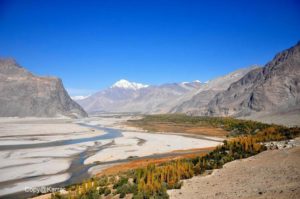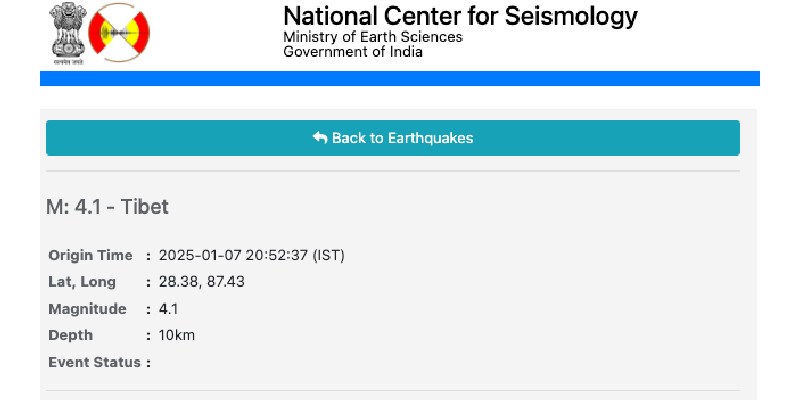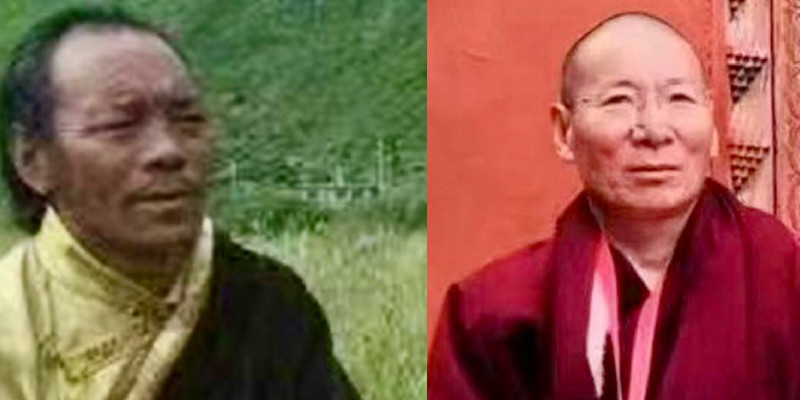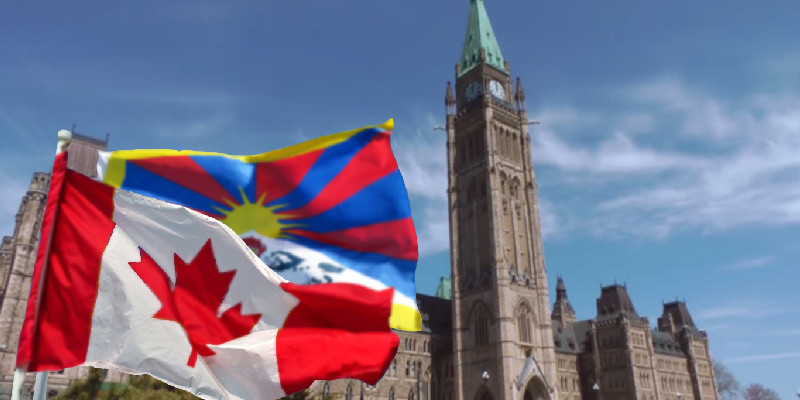I have been in Nepal for 3 weeks in Jan-Feb 2017 for an International Program on Peace building in South Asia where I represented Pakistan. Participants from Nepal, India, Bangladesh, Myanmar, Siri Lanka, Tibet, Mongolia, Afghanistan were also participating in the program. The program with the name “CONTACT Conflict Transformation Across Cultures” was conducted by School of International Training Vermont, USA. The program focused on the conflict analysis and initiatives and challenges of peace building in South Asian countries.
During this program, one of the most interesting experience was the meeting with Tibetans. I met with Tibetan participants from Tibet and Nepal. After exploring some common origins between Tibet and Baltistan, we became close friends. We expanded our discussions and shared our deeper insight on the history, civilization and culture and language of both Tibet and Baltiyul (the former name of today’s Baltistan). We found many similarities in language, manners, culture including clothes, food, house architecture, agriculture and livestock, and daily life styles in Baltistan (Baltiyul) and Tibet. The Tibetan people living in Kathmandu invited me to their homes, families, institutions and people for more exposure. They were very excited and wanted other people know that around a million Tibetan people live in Himalayan range of Pakistani side. Mr. Nyima Sharpa a Tibetan scholar and community leader, took me to his home for dinner twice. Mr. Gyalpo Dolpo took me to Dolpo house in Kathmandu where I met with Dolpo students. They also took me and other participants of the program to the Tibetan Buddhist Monastery (Buddhist religious schools and worship place), different Buddhist religious sites and institutions where we observed the Buddhist worship, prayers, rituals and practices.
Dolpo is one of the village as well as name of Tibetan ethnic community living in the Himalayan range in Nepal. Most of the Dolpo people follow Buddhism while there is a minority who follows Bon religion. Dolpo House is a student Hostel for the students of Dolpo studying in Kathmandu Nepal.
I am not a professional in photography so I asked my Tibetan friend Mr. Gyalpo Dolpo for the arrangement to preserve some of the experience. He organized a professional camera and he himself recorded our conversations. Ms. Lhamo Yangchen, Ms. Lhanzay Sonum and the students of Dolpo house contributed a lot in this regard. So, made some informal conversations in Tibetan or Balti language.
The amazing part of our conversations was the greater similarity in today’s Balti and Tibetan. Balti is also a dialect of Tibetan language family. The Tibetans have preserved the script of Tibet while their accent is influenced by many other languages. But on the other side Baltiyul or Baltistan has a spoken Balti dialect of Tibetan language that is more correct per the script as the Tibetan friends also expressed in view of my speech during the conversations.
 After two weeks, I shared some of recorded clips on my Facebook timeline. People showed much excitement on to the similarities and the fluent conversations between Tibetan people and Balti person. The clips shared on Facebook were viewed, liked and shared at large scale by people of Tibet and Baltistan (Balti Yul) and other interested friends around the world. Interestingly when I shared these clips, dozens of Tibetan friends from across the world sent their friend requests and appreciative messages. The following is the video clip:
After two weeks, I shared some of recorded clips on my Facebook timeline. People showed much excitement on to the similarities and the fluent conversations between Tibetan people and Balti person. The clips shared on Facebook were viewed, liked and shared at large scale by people of Tibet and Baltistan (Balti Yul) and other interested friends around the world. Interestingly when I shared these clips, dozens of Tibetan friends from across the world sent their friend requests and appreciative messages. The following is the video clip:
I am going to share some wonderful response by the people on the sharing of this exposure. These include appreciations, informative comments and questions that appeared only on my Facebook timeline and the message I got directly from the friends. I am sharing only the general comments.
In his message, a Tibetan friend Mr. Phuntsok Rabten ((ཕུན་ཚོགས་) from New York USA says “I think it is fascinating to learn of people who share a common Tibetan heritage. Most Tibetans are unaware of Baltistan and Balti people. I’m wondering if you’ve reached out to Tibetan organizations for information sharing/cultural exchanges. Moreover, I’d highly recommend that you reach out to Tibetan news media such as Voice of America – Tibetan service, Radio Free Asia-Tibetan service, Voice of Tibet etc. I think Tibetans would be surprised and pleased to learn of the Baltis and how you all are trying to preserve the Balti/Tibetan language. Most Tibetans are only aware of Tibetan Muslims (Khaches), but not so much about people of Balti, and other ethnic Tibetan groups in Kashmir and northern Pakistan. Thanks, and I hope you are able to make more connections in the wider Tibetan diaspora.”
Kalsang Wangdu Former Curriculum Officer at Tibetan Children’s Villages in Dharamshala, India shortly said “Much appreciation for all your work” In his message on the International Mother language day he wrote a short blog saying:
“Thoughts on International Mother language day: In the last couple of years, it is encouraging to see several initiatives being taken by young Baltis, a Tibetan-speaking community in Pakistan, to revive Tibetan language (Balti yul). The 20th Century state-building exercises have a devastating impact on Tibetan language and civilization. Until 1950s, Lhasa served as the pivot of Tibetan civilization. However, after 1950s, majority of Tibetan areas were forcefully incorporated into China, and the remaining Tibetan-speaking areas became parts of India, Pakistan, and Nepal. Only Bhutan could remain as a country. In Tibet, Chinese is fast replacing Tibetan as the primary language of governance, education, commerce and daily communication. Tibetan-speaking areas in India (like Ladakh, Spiti, Sikkim, parts of Arunachal Pradesh), Hindi or English is replacing the local Tibetan dialects. Same goes to the Tibetan-speaking areas in Pakistan and Nepal. However, there are some inspiring developments lately, as in the case of young Baltis in Pakistan. And with modern technology, there may be ways these broken Tibetan communities can revive their language (Tibetan literature is amongst 4 oldest, greatest in volume & most original literatures of Asia, along with Sanskrit, Chinese, and Japanese literature).”

Muzaffar Tangrhong a Muslim from Ladakh, India, expressed his feeling of affiliation in these words; “Turned in a friend request. Please accept…was attracted by those language-bridging exercises…and the brief bio-note. I am from Ladakh…currently a Doctoral candidate in international politics at School of International Studies. JNU
He appreciated me and said that “Such interventions are the need to reconnect the lost connections which would lead to scholarship…and linguistic practices”.
While I was in Kathmandu at the greatest Buddhist sacred site “Boudha Stupa with my Tibetan friend Gyalpo Dolpo, he introduced me with a Buddhist scholar Mr. Dolpo Sangye Budha. We talked and shared our views on different topics of Islam and Buddhism. He also sent message from the very place where we had a meeting one week ago ““Tashi delek! How Are you? Now I am at Boudha Stupa”.
Tashi Tsarong from Chandigarh, India sent his greetings and message “Kham Zang! Hello there!! Thank you for accepting my request. I have always been interested in the Tibetan language and it’s influences across Central Asia. Found your video of the short clips earlier today on my newsfeed so, that was very interesting indeed. “
Num Gakhang from Frankfurt, Germany expressed his feelings “Hi how can you speak Tibetan? Are you Tibetan? Or are you Tibetans Muslim?” Because I know there are many Tibetans Muslims in Kashmir. So, I thought you might be one of them.”
Thupten Tu Deng who lives in Lhasa Tibet and works in Shi, Xizang, China sent his greetings “Tashia Delek You speak Tibetan is very nice” He was curious about me and said “Thanks! May I know more about you?
I replied him saying “I am from Baltistan of Pakistan, I am a Peacebuilding Trainer and interfaith Dialogue Practitioner”,
He further said “I read something about the Baltistan before in the book called Three cups of tea. I know that many of Baltistan people are Tibetan. I also met a business man from Pakistan and I asked him about the Baltistan but he did not know any about”.
He added more “It’s really my happiness to know you by Facebook” He shared his contact details with me for more communications.”
Baltistan has lost the Tibetan script after the conversion of the people from Buddhism towards Islam during 13th and 14th AD centuries. The preachers were mainly from Arab or Persia and all the literature of Islam was either in Arabic or Persian. After conversion, the Balti people adopted Persian script to read and write the spoken Tibetan. Baltistan (Baltiyul) has been part of the greater Tibet in the history. But due to the lack of road and communication infrastructure, negligence in taking educational measure to preserve the civilization heritage, religious conversion and division, and political boundaries set in modern nation states not only divided but also caused of huge gape in the Tibetan communities of same origin living mainly in different parts of Himalayan range.
Both Tibet and Baltistan have a vast area with little population Himalayan range. Baltistan is the Northeast region of Pakistan that is run under the Gilgit Baltistan administration. Since last seven decades, this area is neither given the constitutional provincial status nor the status of autonomous status as the Pakistani-administered Kashmir has. Somehow same story is with Tibet that was invaded by China in 1952 by toppling the Tibetan government. So, since then, the Tibetan Administration under the leadership of HH Dalai Lama 14th is operating from Lhasa India that is also called Tibetan Government in Exile. So, the Tibetans are living in Tibet, India, Bhutan, Nepal, Pakistan as residents and refugees in many countries around the world.
The video clips between me from Baltiyul, Little Tibet or Baltistan and Tibetan friends from Tibet and Nepal caused a beginning of brainstorming for many people who are interested in bridging the broken Tibetan communities. It also provided inspiration to the efforts of those people who are struggling for the revival of the Tibetan script lost in Baltiyul.
The response on the shared conversation and the excitement from both sides raises hopes that the broken Tibetan communities and Himalayan people will rebuild their relationships, share their views and common cultural heritage and open the doors for more research, exchange opportunities and interact through the well convened social media. I invite people to share their experiences and expertise in reviving the shared culture of same origin and race of Tibetan communities living around the world specially in Tibet, Nepal, India, Pakistan and Bhutan. Different dialects of Tibetan language is spoken in Balti, Ladakhi, Nepal, Sikkim, Bhutan, Dzongkha, Sherpa, Khams Tibetan, Qinghai, Chamdo, Sichuan, Yunnan, Amdo Tibetan, Gansu, East Bodish, Tibeto-Kanauri , Uyghur, and Lhasa. There are many websites that have course. Games and language learning programs and resources to help people learn Tibetan language. Click here for one of the rich websites. www.tibetanlanguage.org
http://www.digitaldialects.com/Tibetan/alphabet.htm
The great hospitality, respect, love and friendship from Tibetan friends are unforgeable for me. I am very grateful to all of them but especially Mr. Ngima Sharpa, Mr. Gyalpo Dolpo. Ms. Lhanzay Sonum, Ms. Lhamo Yangchen and the Dolpo students and at the all of those who appreciated this shared exposure.









Leave a Reply